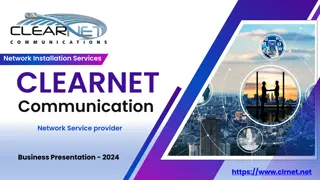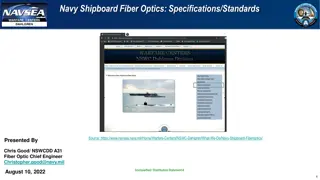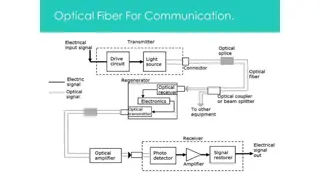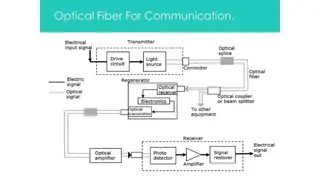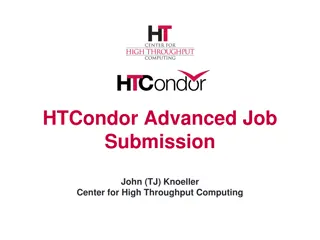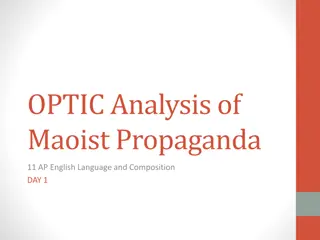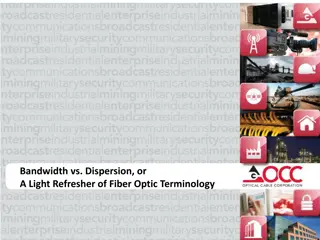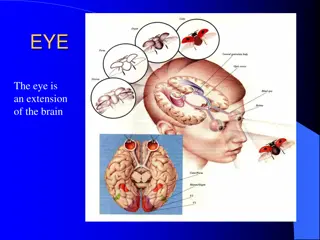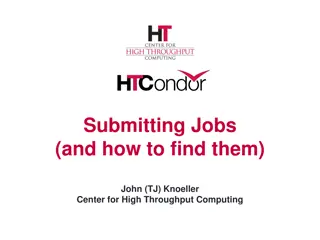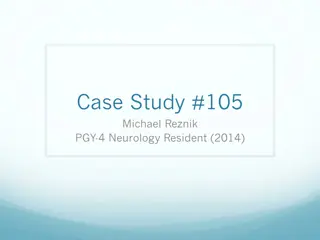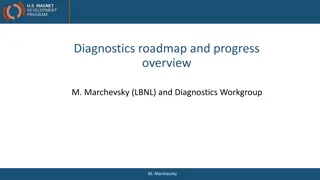
Optic Approach: Managing Training Like Cases
Discover how the OPTIC Approach revolutionizes training management by treating it like an investigative case, leading to improved efficiency and alignment with organizational policies. Learn about addressing training gaps, updating content, and linking training to business processes.
Download Presentation

Please find below an Image/Link to download the presentation.
The content on the website is provided AS IS for your information and personal use only. It may not be sold, licensed, or shared on other websites without obtaining consent from the author. If you encounter any issues during the download, it is possible that the publisher has removed the file from their server.
You are allowed to download the files provided on this website for personal or commercial use, subject to the condition that they are used lawfully. All files are the property of their respective owners.
The content on the website is provided AS IS for your information and personal use only. It may not be sold, licensed, or shared on other websites without obtaining consent from the author.
E N D
Presentation Transcript
The OPTIC Approach: Managing Training Like We Manage Cases J. Richard Rick Kiper, Ph.D. Special Agent Federal Bureau of Investigation GSEC|GCIH|GCIA|GCFE|GCFA|GASF|GCPM E-mail: jrkiper2@fbi.gov
Outline Problem Current Capabilities Solution the OPTIC Approach Cost savings
Problem Scenario #1: A recent court decision on Issue X resulted in a major change to your organization s policy and processes. The content you use to train Issue X to the workforce is contained in a variety of distance learning modules, web-based training modules, job aides, PowerPoint presentations, and other legacy training products. How do you locate the appropriate training materials so that Issue X content may be updated?
Problem Scenario #2: Your top executive manager asks how you can be confident that all of the organization s policies and business processes are being trained to the workforce. How do you conduct a training gap analysis to answer the question?
Problem Answering these types of What are we training? questions can take several days or weeks.
Training products are not coordinated with its policies and job tasks (business processes). Problem Job Tasks Policies ? ? Finished Training Products are not linked back to Policies and Job Tasks Distance Learning Web-Based Training Job Aides User Guides Training Products
Current Capabilities We have electronic lesson plans. We have a learning management system (LMS). We have an online learning environment (OLE) Isn t that enough?
The Solution Treat a training curriculum as if it were an investigative case. Leverage existing case management systems to manage training products in a training curriculum.
The OPTIC Approach Objectives, Policies, and Tasks for Instructional Content. Intelligence program: Domain management Training program: Curriculum management
The OPTIC Approach Use the full functionality of your existing case management system. Not just for storage. Content creation, metadata tagging, collaboration, approval, searching, analysis, reporting, and compliance with policy.
The OPTIC Approach Initiate case, assign participants. Organize with folders. Create lesson plan form. Input learning objectives and content. Select relevant job tasks and policies from pick lists. Add topic-specific tags/labels Attach electronic files (PPTs, aids, etc.)
Pie in the Sky? Kiper, J. R., (2013). Theoretical framework for coordinating training programs with business processes and policies in large organizations. Society for Applied Learning Technologies: Interactive Learning Technologies Conference. Reston, Virginia, August 16, 2013. Kiper, J. R., (2015). Eliciting User Needs for a Knowledge Management System to Align Training Programs with Processes and Policies in Large Organizations. HICSS 2015: 3970-3979. Kiper, J. R., (2016). Needs to Know: Validating User Needs for a Proposed FBI Academy Knowledge Management System. HICSS 2016: 4334 4343.
Huge COST savings Cost analysis based on 500 two-hour lesson plans supporting two residential training programs at the FBI Academy. Assumes use of FBI s existing case management system, Sentinel.
Huge COST savings Lesson plan formatting Five work days (man-days) per lesson plan are spent negotiating format edits between units at the FBI Training Division. Having a system-enforced template would save at least 2,500 man-days annually.
Huge COST savings Obtaining Subject Matter Expert (SME) reviews Using electronic routing and PKI/digital signature could save 500-1000 man-days. Obtaining/tracking approvals- Electronic routing and PKI could save 500-1000 man-days.
Huge COST savings Uploading lesson plans Lesson plans are automatically uploaded upon creation, rather than manually sent to SharePoint libraries and other repositories. At least 100 man-days are saved.
Huge COST savings Responding to data calls, FOIAs, inspections With just one data call per week the system could save at least 500 man-days per year.
Huge COST savings FLETA Compliance Drawing data directly from uploaded lesson plans and training programs could save 1,500 man-days for the two training programs per accreditation period (i.e., every three years).
Huge COST savings Total savings 4,600-5,600 man- days, or 23-28 man-years, annually for only two training programs Using OPTIC-Sentinel system bureau wide would at least double the savings, or 46-56 man-years. Total cost savings: $5-6 million annually!
Summary: OPTIC Advantages Searching across curricula LPs linked to job tasks and policies Training gap analysis Track collaboration, approval, and distribution of lesson plans No debate about lesson plan format Faster responses to data calls



